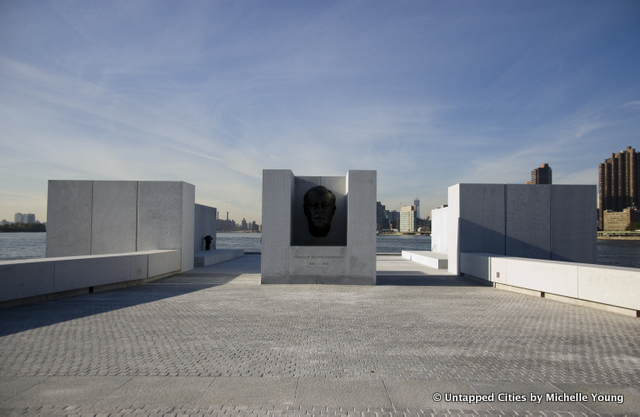 FDR Four Freedoms Park, bust of FDR
FDR Four Freedoms Park, bust of FDR
We’ve been honored to go behind-the-scenes at FDR Four Freedoms Park while it was under construction for the last two years, from the time it was just a few pylons in the water to when “The Room” was completed. Yesterday, we were proud to witness the unveiling ceremony on the tip of Roosevelt Island. With speeches by President Bill Clinton, Governor Andrew Cuomo, Tom Brokaw and Ambassador William vanden Heuvel, distinguished guests like Henry Kissinger, former New York City Mayor David Dinkins, the Frank Delanor Roosevelt’s family, and performances by the West Point Band and Staten Island PS22 Chorus, it seemed that nothing could mar the beautiful fall day.
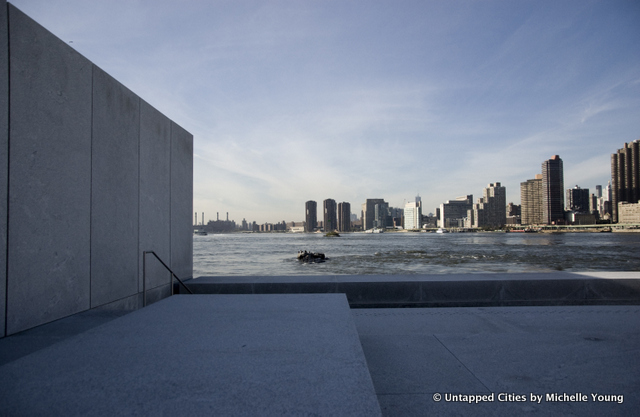 Views of the East River from FDR Four Freedoms Park
Views of the East River from FDR Four Freedoms Park
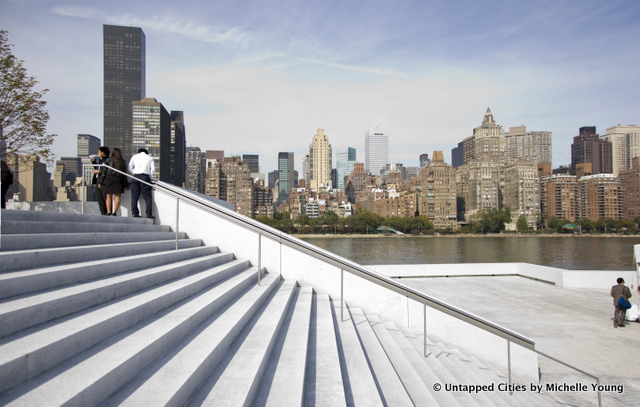 FDR Four Freedoms Park , ceremonial staircase
FDR Four Freedoms Park , ceremonial staircase
FDR Four Freedoms Park has been forty years in the making, the last, unfinished design by architect Louis Kahn. Governor Cuomo contended that the park was a testament to Louis Kahn, whose design lay “dormant for years but could be picked up and be as vital and current as it was when he designed it.” Mayor Bloomberg told the audience that FDR’s Four Freedoms lay at the “heart of the city’s history,” that the city was built by those who fought to extend our freedoms. President Bill Clinton felt that the memorial had been fittingly delayed to a time until we knew those freedoms could not, and should not, be taken away. Yet, he warned that we were in a time in which there are still those that struggle to find freedom from want and that “this park should always remind us that those dreams are worth pursuing.”
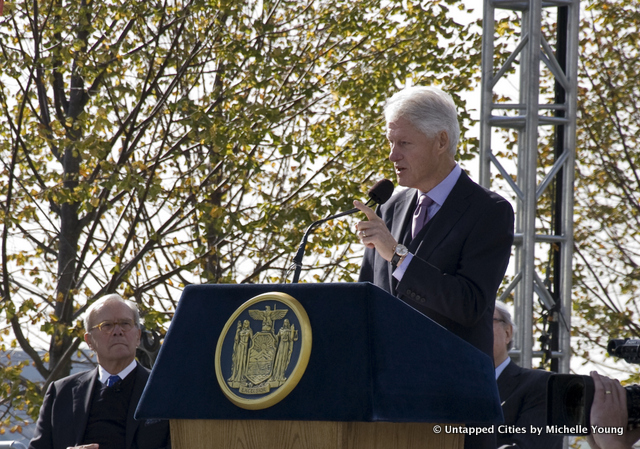 Former President Bill Clinton addressing the audience
Former President Bill Clinton addressing the audience
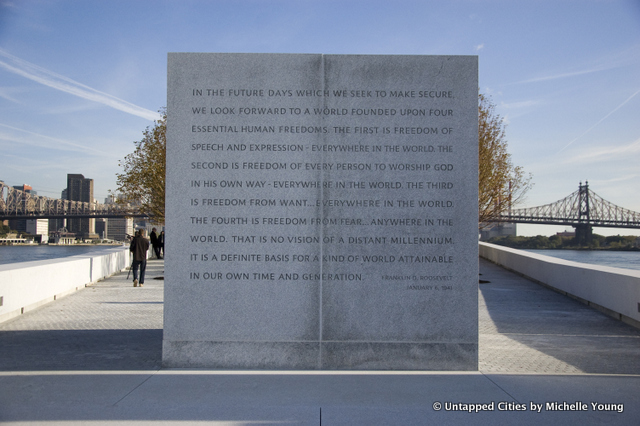
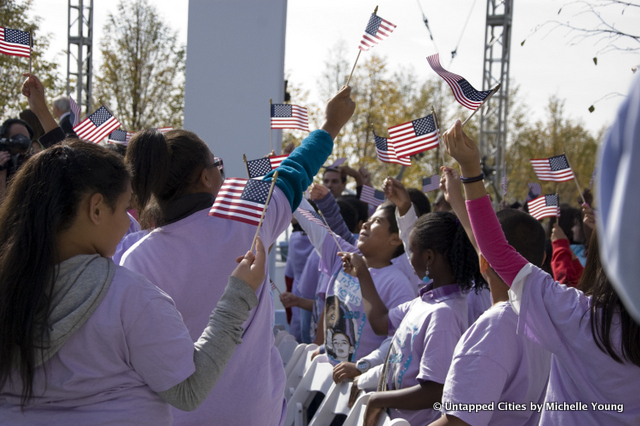 Children from PS22, Staten Island
Children from PS22, Staten Island
Perhaps the most passionate of speeches was delivered by Ambassador William vanden Heuvel, who together with Four Freedoms Park director Gina Pollara, has been the beating heart of this project. Eschewing the rhetoric about freedoms, he opened with the great endeavor that was the construction of the park itself.
“I want to thank the men and women first of all who built this park. I want to thank the construction workers, who placed 261,000 cobblestones, who moved the 36 ton granite blocks, who created and placed the colossal bust of Franklin Delano Roosevelt behind me, the work of his friend and great sculptor Jo Davidson, which will always be the commanding center of this beautiful site, and I want to thank Louis Dubin who made nature live as a landscape architect during the years of creation. I want to thank the companies, the unions, the architects, for everyone involved. This was more than a job, it became a privilege for each of us. Not without exasperation, not without frustration, not without disappointment. But on those days I remembered the wit and wisdom of Franklin Delano Roosevelt, when he said, “When you get to the end of your rope, tie a knot and hang on. And we did.”
Ambassador vanden Heuvel continued that Franklin Roosevelt “made clear that the Four Freedoms were no vision of a distant millenium. They are, he said, the definite basis of a kind of a world attainable in our own kind and generation. This park will be a constant reminder of that challenge…It is not worldly power and grandeur that causes us to remember Franklin Roosevelt, it is the cause of human freedom and social justice to which he gave so much of his life. The Four Freedoms Park will be an eternal reminder for all of us that those who inherit our places is what America’s dream really means…Come my friends, come all of us, come to this place, and find again the inspiration, the courage, and the strength, it is not too late to seek a newer world, and I invite you to find it here.”
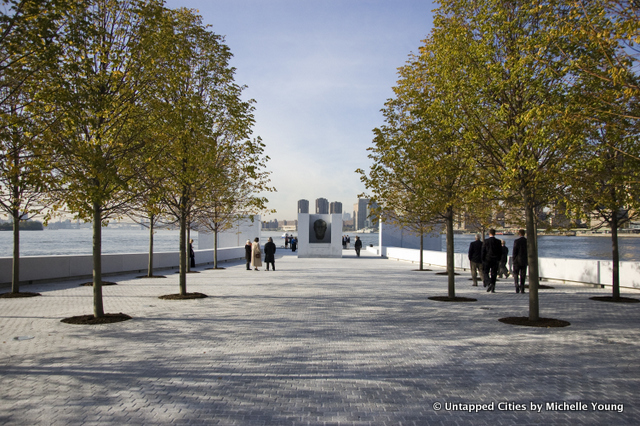 FDR Four Freedoms Park
FDR Four Freedoms Park
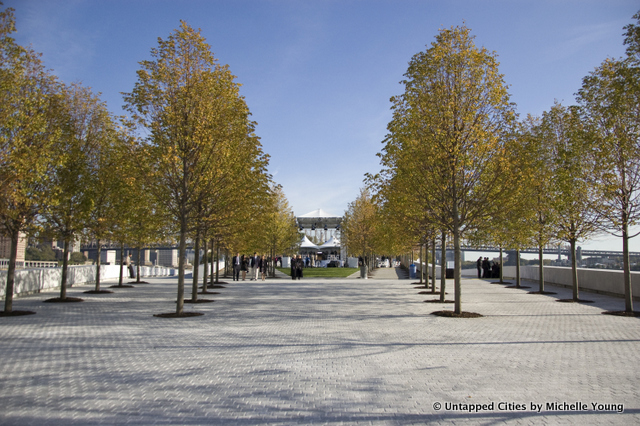 FDR Four Freedoms Park
FDR Four Freedoms Park
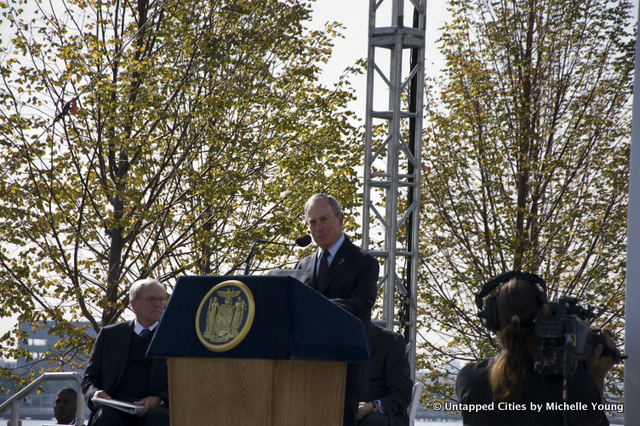 Mayor Bloomberg addressing the audience
Mayor Bloomberg addressing the audience
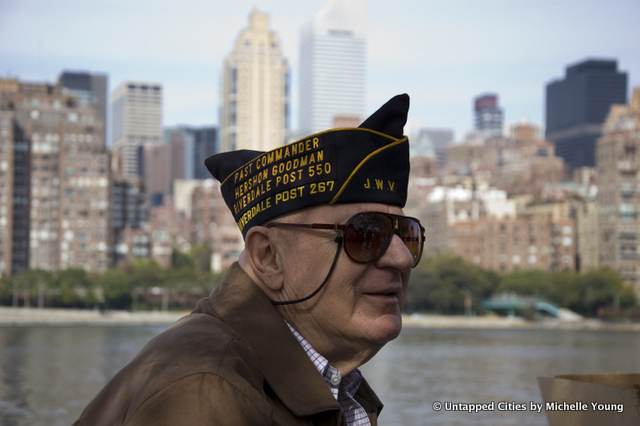 Veteran attending the opening ceremony
Veteran attending the opening ceremony
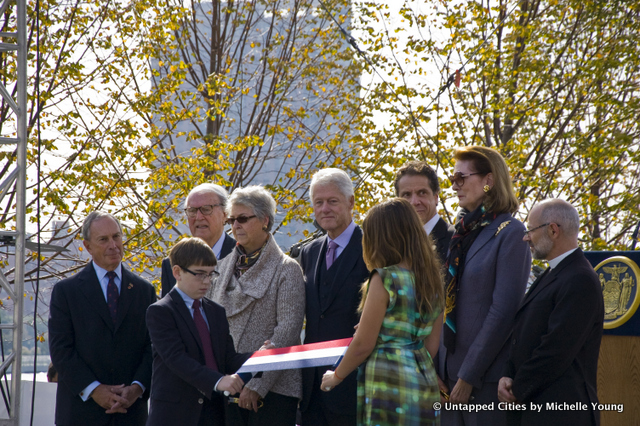
Louis Kahn’s Four Freedoms Park has been the subject of much debate, eliciting sharp and divided emotions. Some deride its architecture, others love it for the purity of Louis Kahn’s vision. Urban explorers lament the taming of a once wild patch of urbanity on the tip of the island, made all the more mysterious by the smallpox castle. Some Roosevelt Island residents have felt left out of the decision making process, and indeed, underneath today’s pomp and circumstance there were grumblings about the irony of a park dedicated to freedom whose opening ceremony was closed to the public. One attendee thought that “FDR would be spinning in his grave given that this is Four Freedoms Park and [Roosevelt Island residents] are being denied the freedom of representation,” referring to how the island’s political leaders are appointed rather than voted into office.
In the end though, this park will be for the public. Governor Cuomo announced yesterday that it will be the 214th New York state park. The park is wi-fi equipped and visitors will have access to a multi-media digital resource about FDR and the park, designed with support from the National Endowment for the Humanities. Any architecture that spurs heated debate in our era has a place and I think it’s wonderful that New Yorkers and visitors alike will be able to take in the magnificent views at the southern end of the island again.
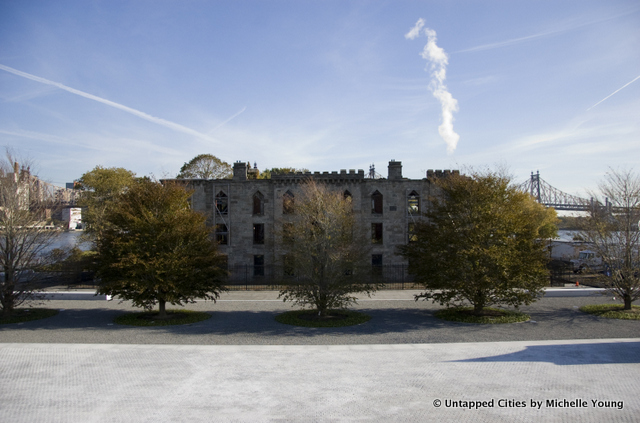 Smallpox Castle on Roosevelt Island, viewed from the park
Smallpox Castle on Roosevelt Island, viewed from the park
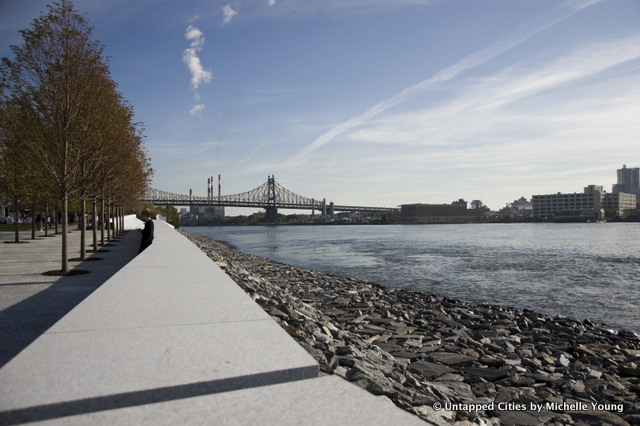 View from FDR Four Freedoms Park
View from FDR Four Freedoms Park
When visiting the park, which opens on October 24th, spend some time in Southpoint Park which includes the well-known smallpox hospital, a landmarked ruin, which Four Freedoms Park hopes to stabilize for use as a visitors center. The most beautiful vistas are in the room, where a natural breeze cools even the hottest of days, and where you can contemplate FDR’s speech under the watchful eye of the United Nations building, the industrial harbor of New York and occasionally Lou the seal, who pops up on the rock outcrop just south of the Island.
FDR Four Freedoms Park website
Get in touch with the author @untappedmich.





